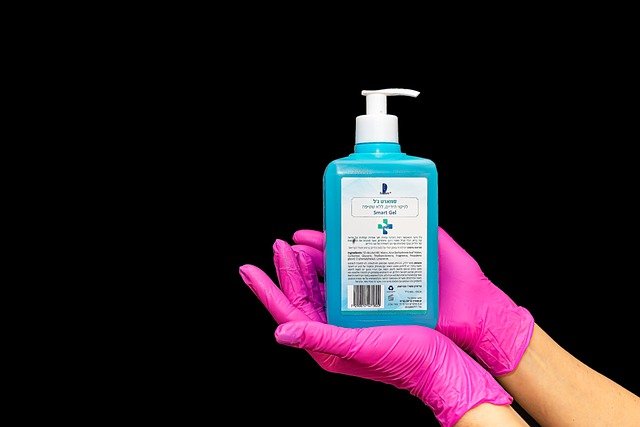Table of Contents
How to clean laptop screen with sanitizer?
Laptops are germ breeding grounds, but frequent cleaning will keep your laptop bacteria-free while also extending the life of the machine. Cleaning your laptop on a regular basis has become more vital in recent weeks. The Centers for Disease Control and Prevention (CDC) suggests sanitizing surfaces, including your laptop, due to public health concerns about the ongoing pandemic. Liquids are generally not recommended since they can damage the LCD’s fragile surface. Even yet, if you ever want to wipe that sneeze residue off the gadget, you’ll need something to rub with.
Cleaning your laptop screen is one of the most critical aspects of laptop maintenance. The only problem is that doing so can be tricky because many cleaning products contain chemicals that can harm the screen. With more people using hand sanitizer, many people are wondering if you can clean your laptop screen with hand sanitizer or what products are ideal for this. What matters most is which product will remove smudges while leaving the screen intact.
Whether you’re working on a laptop or at your desk in front of a monitor, computer displays are likely to be the first item to get filthy. Dust is a key source of concern since it can discreetly coat computers or monitor’s screen, causing color and brightness issues. You might also have to cope with oily fingerprints. Germs can also be a problem (the virus that causes COVID-19) is not typically regarded to be a threat to your health through surfaces like computer displays.
Cleaning Laptop screen with sanitizer
So, can you use hand sanitizer to clean your laptop screen? Yes, hand sanitizer can be used to clean your laptop screen. The alcohol in it will help you remove bacteria and residue that may be stuck to the screen’s glass. Still, certain products are better for this because they contain chemicals that won’t harm the screen and make it easier to clean it.
Now, the greatest thing you can do is understand not only which product is ideal for cleaning your laptop screen, but also how to clean it. You must avoid breaking the screen’s glass or damaging the screen’s internal wires, both of which are required for the screen to function properly.
The alcohol in hand sanitizers is one of the reasons why they work so well. It not only works to eliminate the filth, but it also evaporates swiftly. This prevents the glass from being damaged. Simply put a small amount of hand sanitizer to a piece of cloth or even the screen and gently wipe away the filth with the cloth. There are a few options, but the instructions below will show you how to clean and disinfect a laptop in the safest way possible.
Cleaning a screen necessitates a finer touch than cleaning the rest of your electronics. Some cleansers are abrasive, and applying too much liquid will short out your laptop and monitor. Nonetheless, Windex or any other glass cleaner found in the cleaning aisle should be avoided at all costs, according to Carolyn Forté, head of the Good Housekeeping Institute Cleaning Lab. “. Furthermore, because the most common type of Windex [the plain sort] isn’t intended for disinfection, it doesn’t kill germs as effectively as a proper disinfectant would “She clarifies. While using a clean microfiber towel before and after cleaning your laptop’s screen is efficient at removing streaks on glass, it is recommended using a clean microfiber cloth before and after cleaning your laptop’s screen to remove any streaks or defects and that a true disinfectant might destroy and remove germs from your screen more effectively.
What is the most effective method for cleaning a laptop?
You’ll need the following items before learning how to safely clean a laptop screen and keyboard:
- 1 cup warm water
- Rubber dust blower or compressed air can•
- Disposable gloves (optional)
- Soft, microfiber cleaning cloth
- Isopropyl rubbing alcohol or hand sanitizer
- Unplug your laptop from its power source and, if feasible, turn it off (do the same for monitors).
Step 1: Get your laptop ready for cleaning
Turn off your computer. If you have it plugged in, unplug it from the wall outlet. Remove the battery (if applicable) as well as any other devices that are connected to it.
Step 2: Make a cleaning solution for your laptop
A diluted alcohol and water cleaning solution is the best and safest way to clean a laptop. Alcohol destroys viruses that live on surfaces in addition to disinfecting them.
Pour 1 cup of warm water into a dish to prepare your own laptop cleaning solution. Fill the water with 8 to 10 capfuls of rubbing alcohol. Dip your cloth into the cleaning solution to dampen it now that it’s ready.
Remove any surplus water from the fabric by wringing it out.
Step 3: Wipe down your laptop’s display
Wipe the dampened towel across the lid, base, keyboard, and screen of your laptop. Cleaning the display in one direction, from the top of the bezel to the bottom, is recommended.
After your laptop has completely dried, use a dry microfiber cloth to buff out any leftover spots.
Allow your screen to dry naturally. If streaks appear, Forte recommends wiping it down again with a clean microfiber towel, since the added friction will help eliminate more germs while also smoothing out any streaks. While this technique won’t completely disinfect your screen, a wipe followed by a touch-up with a microfiber cloth can do the trick.
Step 4: Wipe down the keys on your laptop
The keyboard is the dirtiest portion of the laptop and requires special care. Using a damp cleaning cloth, gently wipe the laptop’s keyboard, touchpad, and keys.
When you’re finished, blast out the crevices around each key using a pressurized air can or a rubber dust blower to remove crumbs, dust, and debris. Consider cleaning the dust from the laptop’s vents while you’re at it.

